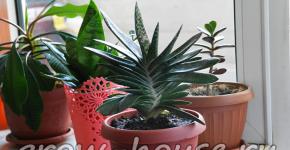Indoor flowers how to care for them. Home Gardening Tips for Beginner Florists
All living things need rest from time to time, and indoor plants are no exception to this rule, especially since with the onset of autumn the days are getting shorter and the plants begin to lack light, and because of the heating devices operating around the clock, your flowers also suffer from dryness air. Therefore, the best that you can offer them from November to April is to immerse yourself in a state of rest.
Listen to article
Preparing indoor plants for winter
Prepare the plants for the winter regime should be gradual. In nature, in autumn, simultaneously with the shortening of daylight hours, the temperature of air and soil drops, and plants at this time begin to accumulate strength for growth and flowering in the coming year. If you make your indoor flowers continue to grow, despite the snow outside the window, it is likely that next season they will refuse to bloom, and decorative-leafy specimens may lose their attractiveness for a long time. Therefore, you need to give them a rest in conditions as close to natural as possible.
To send plants for wintering, they must first be treated from fungal infections and pests. From insects, flowers are sprayed with insecticides or acaricides, and fungi are sprayed with fungicides, and it does not matter if there are signs of disease or the presence of pests on plants or not. Since most pests focus on the underside of the leaves, make sure that the insecticide also gets on it during processing. From sucking pests such as aphids, ticks and thrips, it is better to use insecticide and acaricidal preparations that cope with all types of insects, for example, Actellik, Fioverm, Apollo or Akarin, and destroy the scabbard and worms by Confidor. However, if there is little or no pest damage, first wash the leaves of the plants three times at intervals of five days with soapy water. To prepare the solution, dilute 5 g of grated laundry soap or dishwashing detergent in 1 liter of warm water. And only if this measure does not work, spray the plants with pesticides.
Treatment for fungal diseases is carried out with preparations based on copper and sulfur - Abiga-peak, HOM, Oksikhom, Fundazol or Benlat, but before spraying, all dry and damaged leaves are removed.
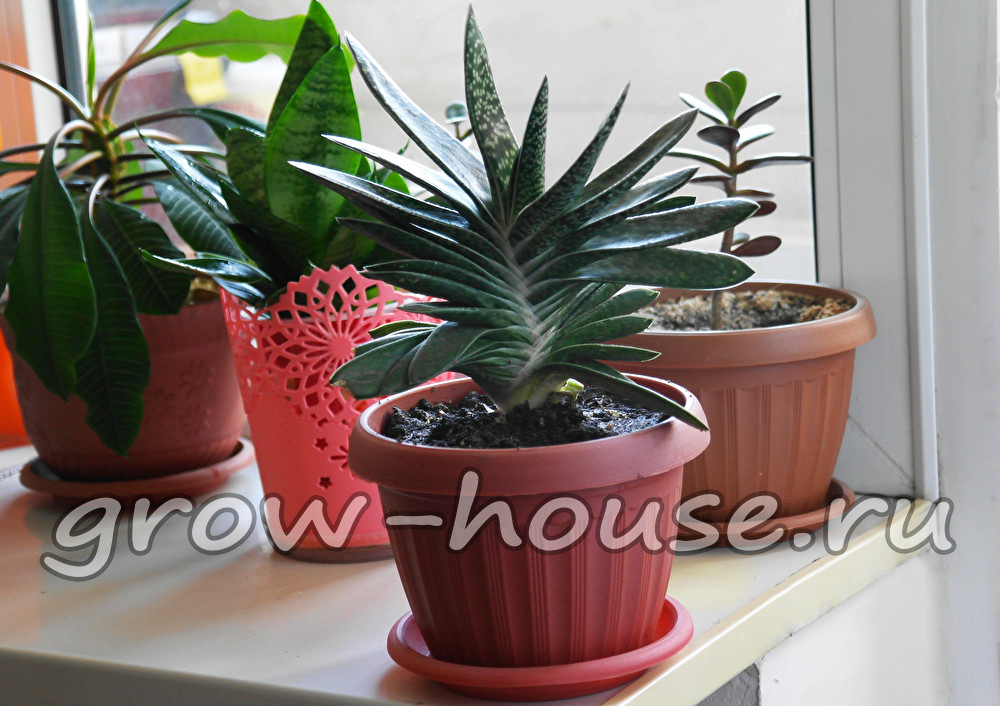
After harmful microorganisms and pests have been destroyed, stop feeding, gradually reduce watering, transfer flowers to an unheated room intended for wintering, and arrange the pots so that the plants do not touch each other - air should freely circulate between them. If the window sills in the room where the flowers will be wintering are cold, put thermo mats or a foam pad under the pots. Keep in mind that unglazed ceramic containers lose heat faster than plastic ones. Amorphophallus, gloxinia, caladium, tuber begonia and calla lilies cease to be watered when the leaves are completely dead, after which the plant tubers are removed, dried, cleaned of dry roots, rotted places are removed from the rhizomes and dusted with crushed charcoal wounds. Then the tubers are wrapped in sphagnum moss and stored in a cool dark place until spring.
If you do not have the opportunity to arrange a dormant period for plants, you will have to provide conditions for their full vegetation during the winter, namely, organize additional lighting and humidification for them.
How to care for indoor plants in winter
Conditions for continuing vegetation of plants.
If your plants do not rest, they will need artificial light for several hours in the morning and evening. Illumination of indoor plants in winter is carried out by a light source fixed at a certain height above them - a phytolamp or a fluorescent lamp.
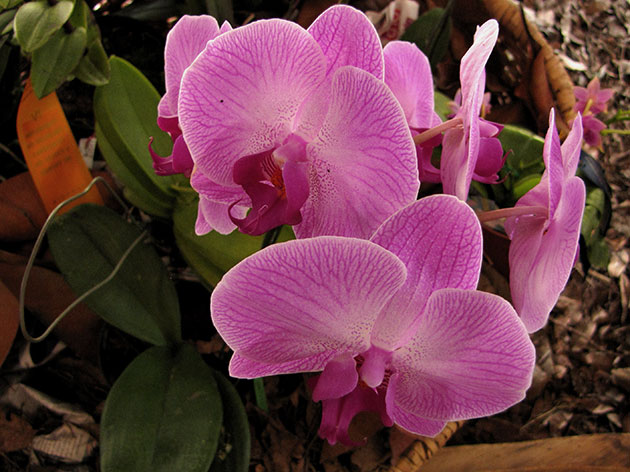
The soil in the pots of vegetative plants must be maintained in a slightly moist state. Avoid abrupt transitions from too dry to wet ground. Develop an irrigation regimen for each type of plant and strictly implement it. Most of the indoor flowers require watering when the top layer of the substrate dries and brightens. The water temperature should be the same as the room temperature. If, with regular watering, the leaves of the plant become sluggish, fall off, and an unpleasant odor emanates from the soil, you most likely allowed the soil to become wet.
In winter, due to working radiators, air humidity drops sharply, and indoor flowers in the winter on the windowsill begin to suffer from its dryness. To eliminate this problem, some plants will have enough water tanks placed around them, some will need daily spraying, and there are plants that are best placed on a tray with wet pebbles. You can cover the batteries with wet towels to increase humidity, but the easiest way is to get a good humidifier, especially since this is not a shortage.
Watering indoor plants in winter
Care for indoor plants in winter is primarily in watering plants, because even with a reduced need for flowers to moisture during dormancy, they still need to drink. How often to water indoor plants in winter?
The frequency of watering depends on the conditions of detention and on the type of plant. There are very few plants with a high need for moisture during dormancy in indoor culture. Usually these are those that in nature live on the shores of lakes and rivers or in marshy areas - cyperus, sedge, colocasia and papyrus. In such crops, the soil in the pot must be constantly moist, but care must be taken to ensure that the water does not stagnate in the pan.
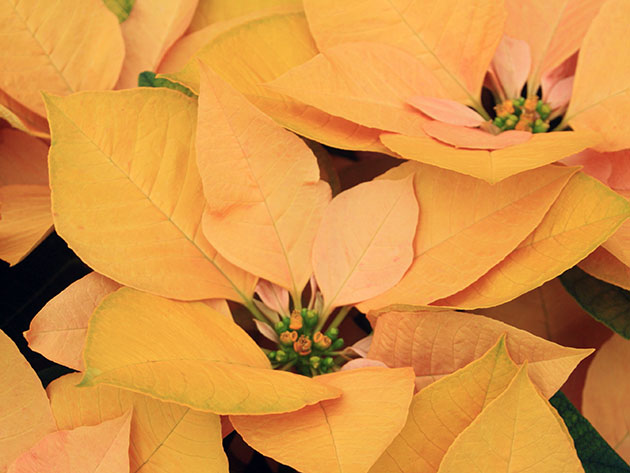
Most of the indoor plants relate to those in which the need for moisture during dormancy is moderate - palm, ficus, philodendron, aspidistra, syngonium, chlorophytum, citrus fruits, zamioculcas, monstera, tradescantia, fern, spathiphyllum and others. These plants are watered when the soil in the pots has dried to a depth of 2-3 cm.
Succulents - cacti, sansevieria, euphorbia, haworthia, aloe, agave, fat girl, gasteria, pelargonium, hoya, Kalanchoe and the like - have a low need for moisture, therefore they are watered only when the soil in the pot is completely dry. Cacti, for example, in wintering conditions at a temperature of no higher than 14 ºC from November to May can not be watered at all.
How to water indoor plants in winter? It is best to put them in a bathtub under a warm shower, after which you need to drain excess water and put the pots back in place - this way you not only moisten the soil well, but also wash the dust off the plants by cleaning the stomata of the leaves through which carbon dioxide penetrates, which is necessary for the photosynthesis process. Observe the following rules when watering:
- - Do not leave excess water for a long time in the pan; otherwise, roots may rot;
- - watering should be timely and plentiful, since the substrate should get wet evenly, and with sparse watering, water simply flows down a dried coma into a pallet, without soaking the soil;
- - Do not water the plants with cold water - it should be at room temperature or slightly warmer.
Feeding indoor plants in winter
Fertilization of indoor plants in winter, if they are at rest, is not carried out.

Temperature for indoor plants in winter
As for the air temperature in the room, each plant has its own requirements. Conventionally, plants are divided into four groups: heat-loving, in need of a moderate temperature, plants of cool content and hardy plants that adapt to any temperature. For example:
- - tradescantia, cyperus, aloe, alocasia, cordilin, aspidistra, clivia and ivy can adapt to any room;
- - Afelandra, many orchids, bromeliads, aroids, calathea, Scheffler, codium and coffee tree are heat-loving plants;
- - oleander, schlumbergera, fatsia, cyclamen, sansevieria, aroid, some bromeliads, agave and asparagus need a moderate temperature;
- - many cacti, boxwood, pelargonium, fuchsia, laurel, conifers and hydrangea winter in coolness.
If you value your flowers and want them to regain their strength before the start of the next growing season, you can arrange them for the winter on an unheated veranda, in a brick shed with windows and without gaps, or on an insulated loggia. The temperature in the room in winter can be regulated by various tricks, for example, in the event of a cold snap, close the doors with additional wooden shields or old blankets, insulate the pots and windows with a cloth, foam or cotton wool.
Lighting for indoor plants in winter
The plants that are in a dormant period will have enough of the light that comes from the window, but for those who continue the growing season, in winter they will need an additional light source that increases the daylight hours for the plants. Such a source, as we have already mentioned, can be phytolamps or fluorescent lamps placed in the window opening at a certain height.
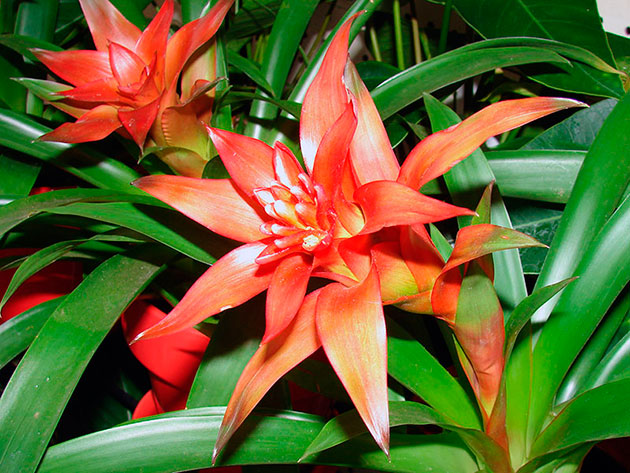
Artificial light should fall on plants at an angle of 90 ºC, so that the flowers do not have to reach for its source. As for the height at which the lamp needs to be installed, it is 55-60 cm for shade-loving plants, and 20-25 cm for light-loving plants. In a room where street light does not penetrate at all, artificial lighting should work for 13-14 hours day, but backlighting is used to increase daylight hours, then turn on the lamps for no more than 5-6 hours. The shorter the day becomes, the more time artificial lighting should work, and, conversely, with an increase in daylight, lightning sessions should become shorter.
How to transport indoor plants in winter
Usually, when you visit a flower shop in winter, you really want to get some beautiful flower - after all, it is so cold, dreary on the street, and spring is soon ... Only here is how to convey it to the house so that it does not freeze? Moreover, the plant already experienced stress when it was delivered from the nursery to the store. And although most of indoor crops can endure strong cooling for 10-15 minutes without noticeable health effects, it is better to do without it.
First you need to pack the flower, and for this you need a cardboard box of such a size that it fits the whole plant and a couple of plastic bottles of hot water.
Of course, one cannot pack a large palm tree or dracaena. For large tree-like plants, you need to make a bag of very dense fabric or oilcloths on a fabric or paper basis of sufficient width and a few centimeters longer than the flower with the pot. The plant is placed in a bag, which is tied on top with a rope - this is how Christmas trees are packed in the Christmas market.
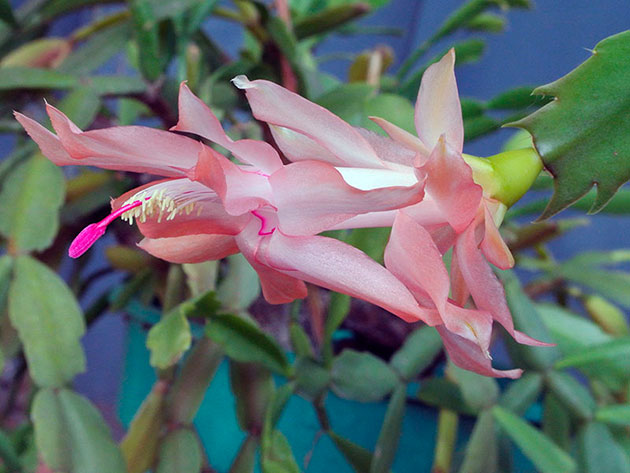
How to care for indoor plants
goal: Familiarity with Houseplant Care RulesTasks:
To instill interest in floriculture.
Introduce children to the rules of care for indoor plants.
Description: this material can be used by teachers of primary school, teachers of preschool or additional education in lessons and classes.
Indoor plant life is completely dependent on care. Heat, light, water, top dressing, fresh air ... This is not a complete list of their needs. I give tips that will help in organizing the care of indoor plants.
How to water indoor plants.
Determine the need for watering by clicking on the pot. A pot with dry soil makes a loud sound, with a wet one it is deaf. Check the ground by touch - it should be slightly moist, not stick to your fingers.
Sprinkle with soft water (the most useful for irrigation - rain and melt snow water) at room temperature or 2-3 degrees higher.
When using tap water, let it settle for a day.
In spring and summer, water once every 1-2 days. Water in the evening, in extreme heat in the morning, and in autumn and winter - only in the morning. Water the plant more abundantly in summer than in winter.
When watering, give the plant so much water that it dries the entire earthen lump. It is harmful to water the plants often and little by little: the water does not moisten the entire earthen coma, and the roots in the depths of the pot remain dry.
Pour water into the pot in several stages until it spills into the pan. If after that it does not absorb for an hour, then it needs to be drained.
Water in a dark and dry room more often than in a cool and humid one.
Make sure that when watering the nose of the watering can touch the edge of the pot, do not pour water with a strong stream.
Water the plants in a small pot more often than in a large ..
Water flowering plants more often than not flowering.
Plants affected by severe overdrying or excessive watering should be watered little by little to restore the root system.
Water plants with lowered leaves (gloxinia, senpolia, primrose) water very carefully so that drops of water do not fall on the leaves, and do not spray them.
Drought tolerant plants (aloe, agave, cacti) water less often than balsam, begonia, arum, monstera.
Pot with cyperus, calla lilies, azaleas for better growth immerse in water.
Water cyclamen only in the pan.
Do not flood the plants. The roots need not only water, but also air. Permanently waterlogged soil is destructive for most plants.
How to provide indoor plants with light.
Keep light-loving plants on or near a window.
Shade-tolerant plants placed at some distance from the windows.
In winter, if possible, move the plants closer to the window so that the leaves get more light.
Do not transfer plants from a shady place immediately to a sunny windowsill or open air, accustom it to brighter light gradually.
Shade the plants from the midday summer sun, from which young leaves will suffer.
Beautifully flowering plants are especially demanding of light, direct sunlight to bloom flowers.
How to provide indoor plants with fresh air.
Air, avoiding drafts. Tropical plants are especially afraid of them. Do not place them between an open window and a door.
To air and moisture went to the roots, the earth in a flower pot was loosened with a wooden stick with a blunt end, so as not to damage the roots. The frequency of cultivation depends on the quality of the earth: clay loosened more often than sand.
The soil was only loosened moist. If it is dry, the roots can be damaged. Do not loosen the ground immediately after watering - it will stick to the stick.
How to maintain the necessary humidity.
In winter, many plants suffer from dry indoor air. The exception is cacti.
To increase air humidity between plants, place containers with water, use double pots or a tray with pebbles. An effective way to humidify air is spraying from a spray bottle.
Sprinkle plants with warm water in the morning on all sides so that their leaves are covered with a layer of small droplets and dry by night. During spraying, direct sunlight should not fall on the plant.
Spraying not only increases the humidity of the air near the plants, but also cleans the leaves from dust and infection with a red spider mite.
When using a pebble pan, do not place the plants too close together to avoid gray rot.
How to create indoor plants the necessary temperature regime.
The temperature for indoor plants should be even, without differences. Differences for them are very dangerous, especially in winter. The only exceptions are cacti and other succulents, which adapted in nature to high daytime temperatures and cold nights.
Regularly ventilate the room, trying to avoid drafts. In winter, when planting, set plants aside from the window.
Insulation of the window, put a 1-2 cm thick board under the pots and plants.
Measure the temperature in different areas of the window (above, in the middle, below) and on the windowsill. Write down the testimony.
Place the plants according to their heat requirements. Those who need moderately warm air, hang in the middle of the window. Place others on the windowsill on the side or in the middle, closer or further from the glass.
Watch the development of plants. They will tell you which place suits them best.
How to provide indoor plants with the necessary mineral nutrition.
Fertilizers have a beneficial effect only when all other living conditions are favorable for plants.
From May to September, fertilizing with mineral fertilizers is done once every two weeks.
Do not fertilize if plants are diseased, dormant, or just replanted. Begin fertilizing 2-3 weeks after transplanting, when the plant takes root well in a new pot.
Feed blooming plants after the appearance of buds and continue to fertilize, strictly following the instructions, until the end of flowering. Actively growing, quickly forming a green mass of plants, as well as plentifully blooming feed more often than slowly growing.
Soil is not just the habitat of plants. Along with carbon dioxide, light and water, it is a vital element, without which most plants cannot survive. The characteristics of the soil, its mechanical composition, acidity, water and air permeability, nutrition play a key role. Errors in the selection of the substrate are a source of great problems and risks. The most reliable option for indoor plants are purchased, ready-made substrates.
Korean salad with cucumbers for the winter - a burning cold appetizer in a sweet and sour marinade. This recipe is not for sissies, as it contains quite a lot of hot pepper (this is what the highlight of the workpiece is all about). Spicy vegetables will come in handy for the festive table or as a side dish for a meat dish, in particular, a barbecue or fried chicken. For a recipe for a Korean salad with cucumbers and tomatoes, choose high-quality vegetables - small pimply cucumbers.
Few people know, but gooseberries - the culture is literally eternal and very productive. From a well-developed gooseberry bush, which you looked after properly, you can collect up to a dozen kilograms of both tasty and large berries at the same time. So, let's first briefly list the activities that we need to conduct during the autumn period with gooseberry bushes, and then we will describe each of them in detail so that you have an idea of \u200b\u200bwhat and how to do.
Primrose plants are ideally suited to the concept of a “lazy” garden. They are unpretentious, undemanding to care, can settle even where, it would seem, primroses do not belong at all. Equally beautiful leaves and flowering are a nice bonus for plants that you can "plant and forget." True, to say that they grow by themselves is not possible for all primulas. But there are many types that allow you to create beautiful flowering accents, simplifying the maintenance of the garden.
Meatballs with tomato and sweet pepper gravy is a classic dish that many fell in love with as a child. No matter what the pork cutlets are called: meat balls, hedgehogs from minced meat, meatballs or meatballs, as in this recipe, the essence of this does not change. A juicy cutlet in a fragrant thick sauce looks so appetizing that everyone salivates without exception. In gravy for meatballs, you can add cream or sour cream and season it with flour, but it is better to add more vegetables.
The controversy surrounding the digging of the tree-trunk circle of fruit trees has been, is and will be for a very long time, probably as long as the gardens exist. There are quite a few options for keeping the tree trunk around the fruit tree, there is black steam (digging), sodding, and mulching, and each of these events has both pros and cons. Digging the soil in the near-stem zone and mulching can be combined, including watering and fertilizing.
Palm trees did not accidentally gain leadership among indoor giants. Lovely, austere and elegant at the same time, they have been adding clean lines and tropical mood for decades to homes. And although the affiliation of plants to palm trees is determined at a glance, the palm family is far from homogeneous. And first of all - by its exactingness and moodiness. Among indoor palm trees, there are both unpretentious and species, the cultivation of which is only possible for the elite.
Tomatoes in their own juice for the winter with bell pepper - delicious tomatoes for the winter. These blanks do not belong to the category “put everything in a jar, filled it with marinade”, no - you have to tinker. But, as they say, the devil is not so terrible as he is painted. Firstly, the skin of ripe tomatoes is easily removed. Secondly, a blender mashes tomatoes in seconds. Thirdly, it is better to spend 15 minutes on sterilizing the blanks than the same 15 minutes on a trip to the store.
The time has long passed when daylilies in every city courtyard and garden looked the same. Today, a variety of deliciously flamboyant ones can even compete with tulips. And new varieties appear almost every day. Extravagant or touching modern daylilies made a leap forward and firmly entrenched in their lists of favorite perennials. And even the most elaborate and rare varieties still match his reputation as an unpretentious culture.
Planting garlic in the winter is a responsible event, here you need to choose the right planting material, correctly determine the timing of planting, know the subtleties and rules, nuances and features. Let me start with such nuances. Garlic has two different forms: one is referred to as non-shooting, the second - shooting. What is an arrow? The simplest is a flower stalk. The arrow forms only winter garlic, that is, the one that we sow in the autumn.
Winter squash with pepper, tomatoes and onions is another way to preserve a crop of vegetables and replenish stocks of delicious vegetable stew. The stew turns out to be similar in taste to the traditional lecho, slices of bell pepper replace the tender zucchini. When you open the jar, the smell spreads incredibly seductive. I advise you to use containers with a capacity of 500 to 800 g for the preparation of salads - it is convenient to sterilize and do not have to store open canned food.
Transplanting sooner or later is necessary for all indoor plants. But in the case of large-sized indoor, it is not carried out until it is possible, since the task is not easy. And rarely, what kind of adult plants need an annual transplant. In years when a transplant is not performed, it is recommended to perform the mandatory procedure - partial soil replacement. The topsoil is replaced both for hygiene and to maintain a normal substrate.
Cucumbers pickled for the winter, crunchy, in jars of garlic, onions and chili - another simple way to prepare savory vegetables for the winter. There are many recipes for pickles and pickles, even a lot. This recipe has a twist that is intended for spicy lovers: add a pinch of cayenne pepper to the marinade, and a green chilli pod to the vegetables. Such cucumbers, ladies forgive me, will please the strong half of humanity - an amazing cold appetizer.
The vast majority of gardeners, especially summer residents, forget about their shrubs until the next spring after the end of the berry picking season and, at best, feed them after a snowfall with a handful of nitroammophoski or weed them, removing the rapidly growing wheatgrass. This fate befell the black currant. Although outwardly the culture seems to be a healthy and strong shrub, it also requires care and attention. And especially in the autumn, when a long winter is ahead.
Hydrangeas - shrubs are not only fashionable, but also indispensable. They are used both in urban landscaping and in private gardens, paying tribute to the bright foliage, pastel colors of the caps of inflorescences and stable decorativeness. Most often, hydrangeas are planted in groups or singly, mixing with other bushes and trees. Meanwhile, the company of these garden princesses will be able to make perennials, with which you can create colorful, stylish and expressive combinations.
Living plants in a house, apartment or office is a huge plus. Moreover, not only interior designers are talking about this. In Eastern philosophy on the arrangement of living space, the topic of indoor plants is given a lot of attention. Moreover, even doctors say the benefits of indoor flowers. So, indoor plants: photos and names you can find on our site in this section.
How useful the information on this issue is, of course, difficult to overestimate. Someone chooses a plant as a gift and does not know what to give in order to bring happiness and good luck. Someone using indoor plants wants to improve the atmosphere in their home, attract money, love or health. We are talking about all this in the articles of this section. So, their reading will be extremely important for every person.
Indoor plants: photos and names, caring for them is information that is needed not only for general development. Of course, it is also practical. Some plants like to stand in direct sunlight, while others love the shadow. Moreover, the care of specific plants will vary depending on the season. If we consider this information in general, then in winter flowers need less watering and try to forget about fertilizers altogether.
We publish here articles about all indoor plants, photos and names, home care for them.
Please note that in this section indoor plants: photos and names are non-blooming. Indeed, for flowering plants requires a separate section. Plants that do not bloom are, of course, easier to care for. But when growing such plants, problems may arise. Leaves may turn yellow or dry at the ends, leaves may fall off altogether. So, if a new houseplant has appeared in your home, before active care it is best to familiarize yourself with certain useful information.
Be sure to grow indoor plants! Do not think that it is difficult to have beautiful flowers at home: it all depends on your knowledge and skills. And as you know, everything can be learned. Moreover, if you have already come to our site, then information on any issue will be found in huge quantities. Flowers in the house are beautiful and aesthetically pleasing. Many indoor plants have the ability to clean the air, some absorb dust. Others release certain substances into the air, which favorably affect the human immune and nervous systems. Well, didn’t you want to know all this in more detail?
Monday, 10 Oct 2016 Flowers on the windowsills are very beautiful, but not every housewife has enough time to look after them. Indeed, many of the indoor plants are quite moody. So that the window sills are not empty, we suggest planting succulents in pots, for example, unpretentious gasteria. About how to transplant it and what it will take, read this article.
Flowers on the windowsills are very beautiful, but not every housewife has enough time to look after them. Indeed, many of the indoor plants are quite moody. So that the window sills are not empty, we suggest planting succulents in pots, for example, unpretentious gasteria. About how to transplant it and what it will take, read this article.

